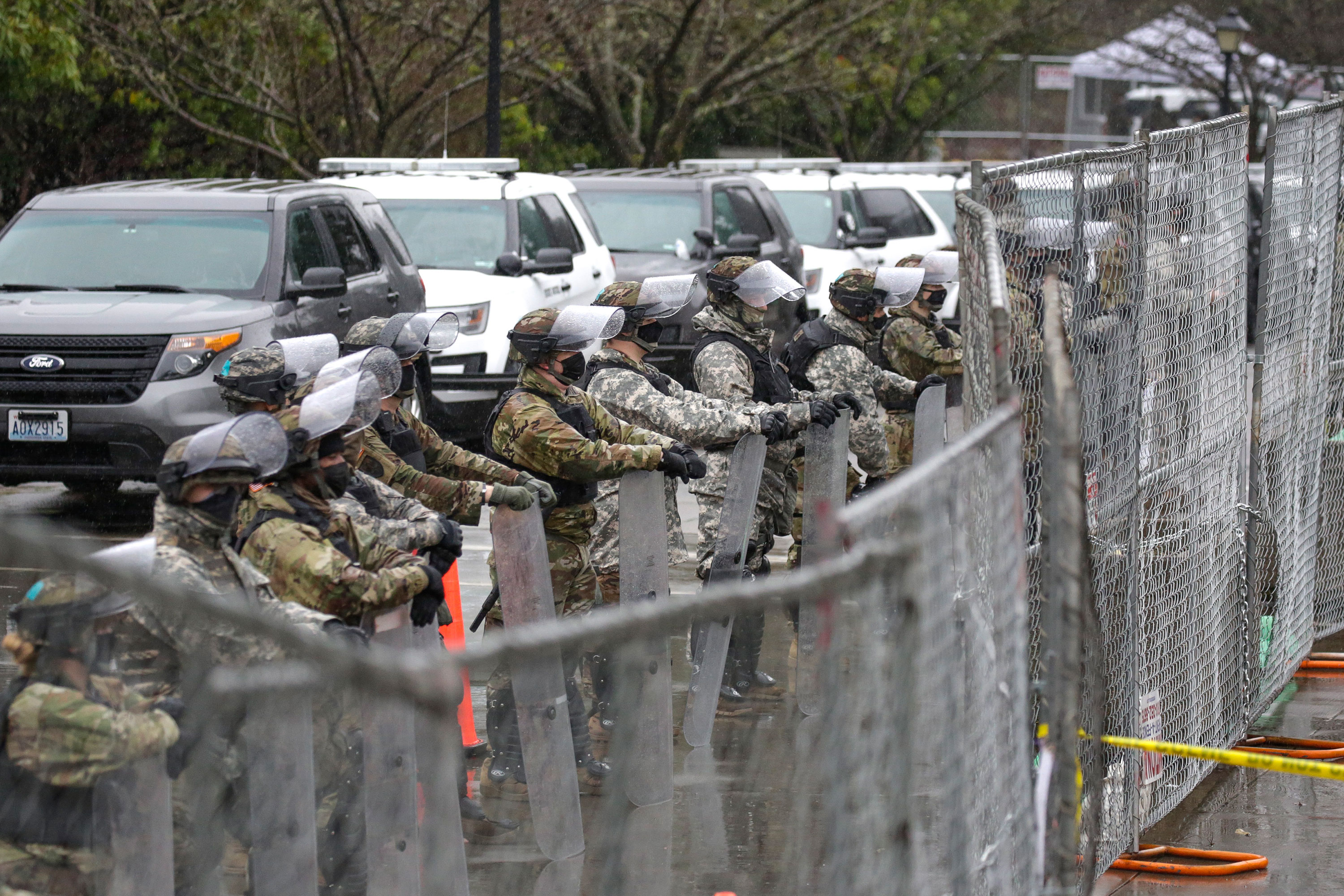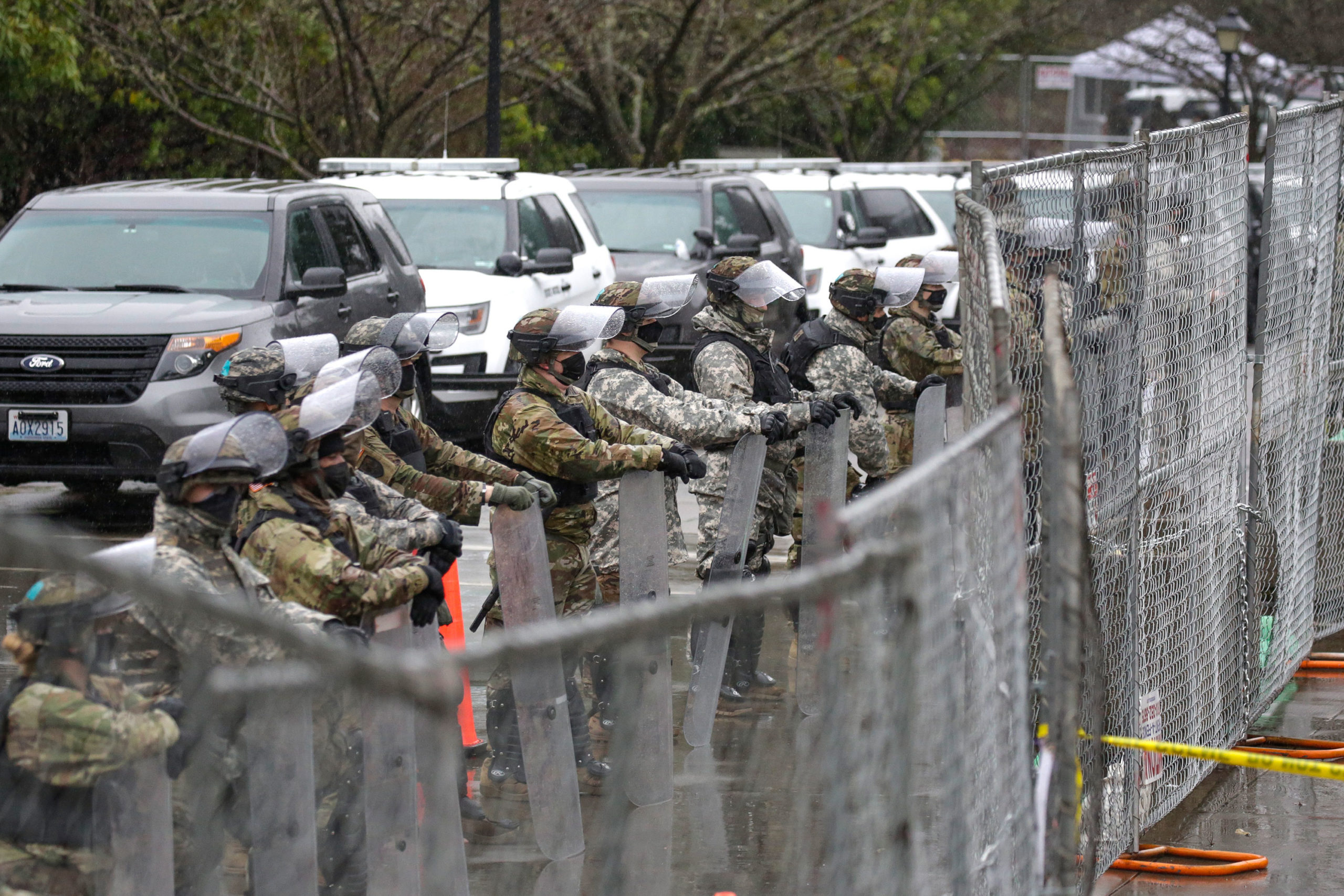
State capitols across the country are bracing for violence after federal law enforcement officials warned governors and police chiefs about the potential for unrest in the wake of the deadly insurrection at the US Capitol, a siege experts say was “like putting gasoline on a fire” and will likely serve as a motivator for future attacks.
The FBI warning that armed protests are being planned in all 50 states in the days leading up to President-elect Joe Biden’s inauguration has prompted governors and police chiefs to deploy thousands of officers and equipment at state capitols around the country to thwart potential violence.
“The threats are very credible. And you’re coming off a Washington protest that was credible, and let’s just call it ‘successful’ in the eyes of protesters. It’s going to fuel their confidence that they can continue because we didn’t show ’em we could control ’em,” said Timothy Dimoff, a former SWAT team leader who operates a security consulting company.
“That’s like putting gasoline on a fire,” Dimoff continued. “Now we sent ‘em home and said you guys had a successful game plan and can do it again. That’s where the problem is.”
US officials on Wednesday warned of future attacks, in part because of the success of the siege last week. The FBI bulletin noted that extremists could zero in on government officials and institutions, as well as racial and religious minorities, journalists, and members of the LGBTQ+ community.
It also indicated that the Capitol insurrection may have served as a venue for extremists of differing ideological motivations to foster connections. After the attack, people who descended upon the capitol went home, where a number have since been arrested for their roles in the assault.
John Miller, a deputy commissioner of intelligence and counterterrorism in the New York Police Department, called the movement that participated in the attack last week “loosely organized” and noted that people had come together over social media.
“The propensity of the violence sometimes boils down to the individual,” he said Thursday. “Nothing compares to any past threats; we have never had Americans fighting Americans on the streets of the nation’s capital probably since the civil war.”
Other motivations that could fuel future attacks include anti-government sentiment held by extremists, as well as grievances associated with the false narrative that the 2020 presidential election was stolen, according to Wednesday’s bulletin.
“What you see now is a coalescing of the movement,” said Jason Blazakis, who retired from the State Department’s Bureau of Counterterrorism in 2018. He said various extremist groups that had operated alone over the last four years moved in concert during the assault on the Capitol last week.
“The heave-ho of everyone getting through – you have Oath Keepers next to Proud Boys next to white supremacists, that’s what makes this a dangerous time,” he said. “The movement is energized and they’re emboldened by surprise success on [January] 6th. I think they’re surprised. They didn’t plan to Nth degree, and to be able to breach the pillar of democracy, that’s going to motivate them.”
You may also like
-
UK coronavirus variant has been reported in 86 countries, WHO says
-
NASA technology can help save whale sharks says Australian marine biologist and ECOCEAN founder, Brad Norman
-
California Twentynine Palms: Explosives are missing from the nation’s largest Marine Corps base and an investigation is underway
-
Trump unhappy with his impeachment attorney’s performance, sources say
-
Lunar New Year 2021: Ushering in the Year of the Ox

